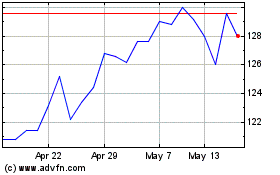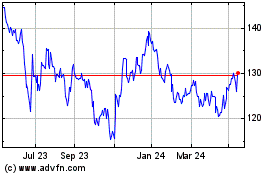It remains the Company's policy not to have long-term corporate
level debt and it is anticipated that to the extent that the
corporate facility is drawn to fund acquisitions, this would be a
short-term arrangement and equity funding, by means of a capital
raising, would be sought to repay outstanding debt as soon as
practicable. As at the date of this report, the corporate debt
facility was GBP27.2 million drawn.
Current Market Environment and Future Opportunities
During 2014 the Company benefited from the significant level of
preparatory development work the Investment Adviser had undertaken
in previous periods resulting in a record level of investment of
GBP188.2 million in the year. In addition to its willingness to
invest in such new 'greenfield' opportunities the Company's ability
to increase the value of its investment portfolio also depends on
the following market factors:
> The number and quality of new 'greenfield' infrastructure
opportunities being procured by public sector bodies (known as the
'primary market')
> The number and quality of investments being sold by
existing owners (known as the 'secondary market')
> The level of competition for primary or secondary
opportunities and the impact this has on pricing and level of
returns
> The macroeconomic environment (e.g. the impact of
inflation, interest rates, and the pricing of risk and return for
alternative investments)
The Company continues to have a very positive outlook with good
opportunities to make further investments in the infrastructure
markets and sectors where it is most focused. Public finances
continue to be stretched and many governments see private sector
finance as an enabler of investment in this space.
However, competition in the secondary market for assets such as
those in which the Company invests is intense. While the Company is
always keen to review mature secondary market investment
opportunities being sold by third party developers, many of these
opportunities are less likely to be accretive to the portfolio.
The Company is also selective to ensure an appropriate risk and
return balance within the overall portfolio. These trends have also
resulted in the Company taking opportunities to divest smaller,
non-strategic assets where there is little prospect of increasing
stakes to controlling positions and where market pricing is higher
than book value.
The Company has an international focus and the current market
environment in each of the major jurisdictions in which it operates
and the potential for future investment within each is outlined in
more detail below:
United Kingdom
The UK Government continues to view high-quality infrastructure
as means to increase productivity and competiveness. Its 2014
edition of the National Infrastructure Plan indicates a programme
of over GBP460 billion in investment until 2020 and a priority list
of its top 40 projects. It also notes that over 80% of the
investment will either be full or partly financed by the private
sector.
Much of the emphasis of the Plan is on energy and transport. It
also identifies key projects in other sectors in which the Company
is active. For example some of the larger projects are likely to be
completed on a PPP-like profile which, while procured under a
different regulatory basis, bear similar risk and return
characteristics to other assets within the existing portfolio.
It is also actively supporting innovation in private sector
infrastructure finance. For example, as an alternative to
traditional bank or government financing, the Education Funding
Agency procured a funding scheme which aggregated the financing of
five batches of schools being delivered through the Priority
Schools Building Programme. As noted elsewhere in this report, the
Company was the successful bidder on the scheme, and is pleased
that it played a lead role in this 'aggregated' model of financing
which has the potential to be replicated across other centrally
procured government projects.
We have highlighted for some time the attractive characteristics
of the offshore transmission ('OFTO') sector - where investment is
made into the cables that link offshore wind farms to the national
electricity grid. These projects continue to be amongst some of the
most attractive in our sector as they provide long-term income
without demand risk i.e. no exposure to volume of electricity
generated by the wind farm. In most cases these have historically
also provided full inflation linkage. The Company has, to date,
been a market leader in investment into this space. Given the
barriers to entry for non-participants, the Company expects to
continue to benefit from sizeable new 'primary market'
opportunities that will come to market over the coming years; the
regulator, Ofgem, has reaffirmed its estimates of a further GBP8
billion of investment in OFTOS by 2020 with the prospect of
significantly more in the years thereafter.
Although there is a UK general election in May 2015, all main UK
political parties appear to currently support the ongoing
investment in UK infrastructure.
Australia
Australia has long involved private sector organisations in the
provision and financing of its public sector infrastructure. It
also has a well developed market for investment, not only by local
superannuation funds and similar investors but it has also
developed a large pool of international investors who have invested
widely there on the basis of the attractive market dynamics.
While each state government also has its own long-term
infrastructure strategy delivery organisation there is a unified
method for the delivery of PPP Projects, the National PPP Policy
Frameworkwhich provides a consistent approach and streamlined
procedures that encourage private sector investment in public
infrastructure.
Currently Australia's infrastructure priorities include
multi-billion Australian dollar transport projects such as
improvements and developments to highways and rail rebuilding and
modernisation together with water and communications
infrastructure.
While there are attractive opportunities in the Australian
market, until more recently the Australian dollar ('AUD') had been
trading at a substantial premium to Sterling compared to
longer-term rates. As a result it was less attractive for the
Company to consider investing in that market. However, over the
past 12 months Sterling has appreciated against the AUD thus
potentially making Australian investments more attractive again and
the Company will continue to assess opportunities in this
market.
The Investment Adviser is currently shortlisted as one of two
bidders on both a courts project in Canberra and a grouped schools
project in The State of Victoria.
Europe - excluding UK
The Company remains very positive about prospects for further
investment in Northern Europe.
Jurisdictions including Belgium, the Netherlands, Germany and
Scandinavia continue to offer new primary market PPP opportunities
across a range of sectors including accommodation and
transportation which are attractive to the Company. Ireland has an
active PPP programme where the Company's Investment Adviser is
currently bidding on a range of primary market opportunities.
Elsewhere in Europe, austerity measures and fiscal constraint
have limited the capacity of governments to fund infrastructure
projects, particularly in southern Europe. These areas where there
is a less stable track record of PPP investment are not currently
an area of focus for the Company.
Currently, in the addition to the Irish bids mentioned above the
greatest focus is being directed to pursue opportunities in Germany
(where the Company acquired the BMBF asset during 2014 and also
currently invests in two other projects); Belgium (where the
Company has an existing investment and further investment
opportunities are being reviewed) and the Netherlands (where the
Company's Investment Adviser is participating in three separate
primary market tender processes).
United States
The PPP (or P3) market in the United States is seen as one of
the largest growth markets for infrastructure in the developed
world, notwithstanding the additional complexities arising from
slightly different procurement processes in the different
states.
As highlighted in the Chairman's Letter, the Investment Adviser
has agreed to the Hunt group of companies taking a 50% interest in
the holding company of the Investment Adviser. A key element in
this has been the right of 'first look' that the Company has been
granted as part of the transaction. Hunt are significant
participants in public sector infrastructure in the US and the
Company is optimistic that as a result it will see an enhanced flow
of attractive investment opportunities from North America in future
years including those which are being reviewed currently with
Hunt.
Other Countries
PPP in Canada is well established and the Company holds two
existing Canadian investments. The Company's Investment Adviser
remains active in the Canadian market. However, the market is
dominated by domestic pension funds making entry into new
investment opportunities more challenging. The Investment Adviser
continues to believe that there will be attractive investment
opportunities in the longer term as infrastructure is upgraded. In
the short term investment is more likely to be secondary market
opportunities rather than primary investments.
New Zealand continues to also be of interest to the Company. The
government in that market has been pursuing a privatisation process
of several state-controlled energy and infrastructure businesses.
While relatively small, the Investment Adviser continues to monitor
projects as they come to market, resourcing these opportunities
from its Australian offices and is currently bidding for one such
opportunity.
International Public Par... (LSE:INPP)
Historical Stock Chart
From Jun 2024 to Jul 2024

International Public Par... (LSE:INPP)
Historical Stock Chart
From Jul 2023 to Jul 2024
